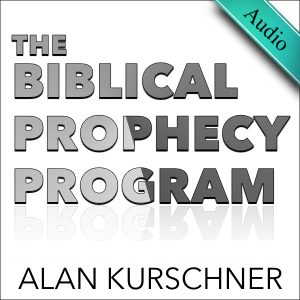Podcast: Play in new window | Download | Embed
 I talked about Paul’s use of the term “temple” (naos) in 2 Thessalonians 2:4. Does Paul have in mind a literal, physical temple? Or is he referring to a figurative, spiritual sense? I argued the former, the literal, physical sense.
I talked about Paul’s use of the term “temple” (naos) in 2 Thessalonians 2:4. Does Paul have in mind a literal, physical temple? Or is he referring to a figurative, spiritual sense? I argued the former, the literal, physical sense.
I first explained that naos does not require some large Solomaic-like structure. Instead, it can refer to a small tent-like structure or inner sanctuary. In addition, it must be erected before the midpoint when the Antichrist is revealed and commits the abomination of the desolation.
I then responded to the historicist interpretation of “temple” in 2 Thess 2:4. Typically, they interpret it in a spiritual fashion such as “the church.” I explained two exegetical fallacies that they commit when arguing for this conclusion, including the “corpus fallacy.” This latter fallacy is a common lexical fallacy that is linguistically naive. I gave a couple of analogies to illustrate my point. Historicists at the end of the day must import a foreign meaning into 2 Thess 2:4 to maintain their figurative-church interpretation of naos.
Finally, I cited three New Testament scholars (two of them Thessalonian scholars) who I thought have made excellent points on this issue. Colin R. Nicholl gives four reasons relating to the worship of the Antichrist. Daniel Wallace demonstrates a development of Paul’s thought on the temple. And Gene L. Green makes the point of the orientation of the Antichrist’s claims that militates against a “church” sense.
Links mentioned in program:
Colin R. Nicholl. From Hope to Despair in Thessalonica: Situating 1 and 2 Thessalonians. Society for New Testament Studies Monograph Series 126. Cambridge : Cambridge University Press, 2004. See also his “Michael, The Restrainer Removed (2 Thess. 2:6–7).” The Journal of Theological Studies, April 2000.
https://bible.org/article/”temple-god”-2-thessalonians-24-literal-or-metaphorical
Gene L. Green. The Letters to the Thessalonians. Grand Rapids: Eerdmans, 2002, 312.


